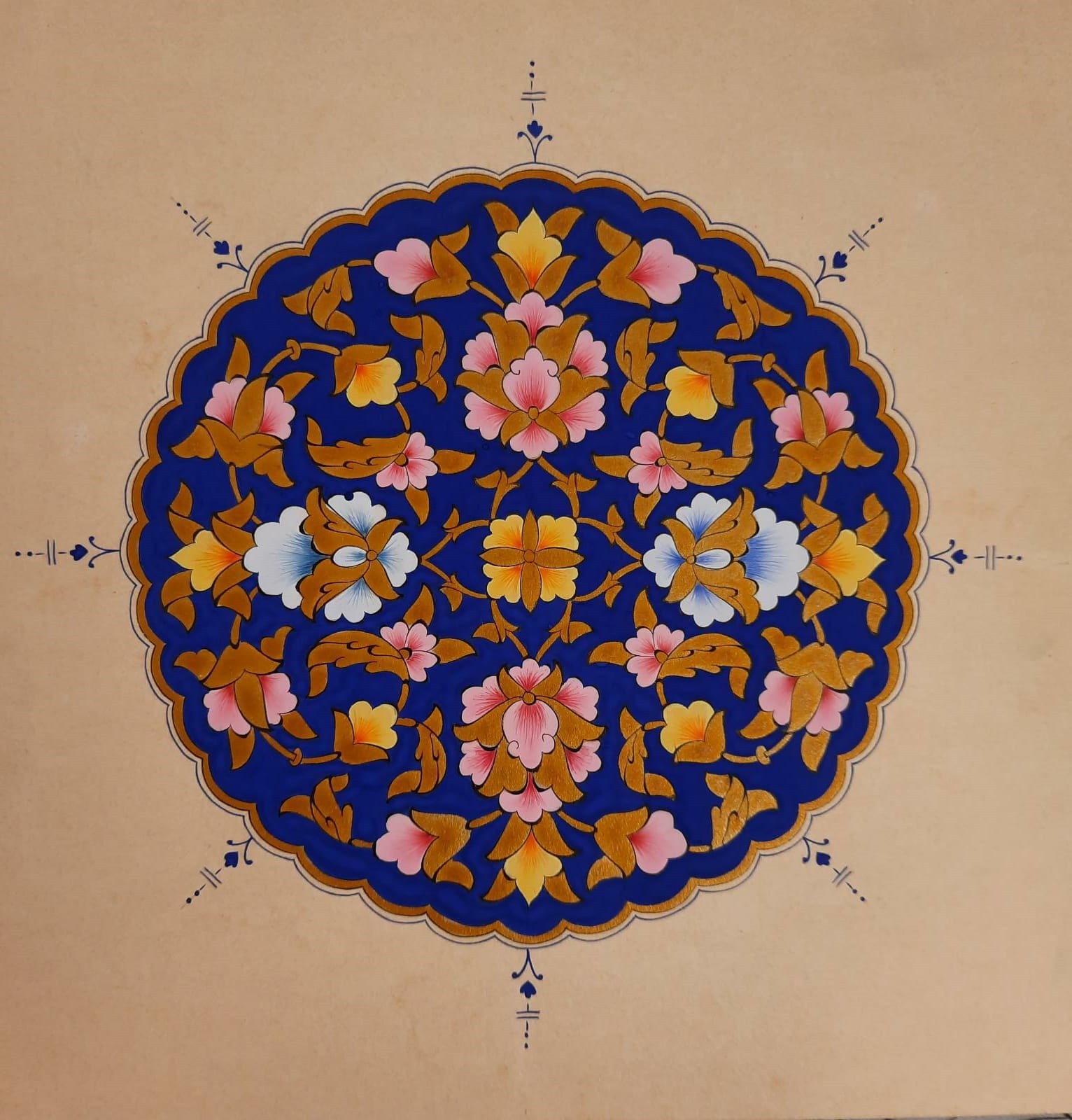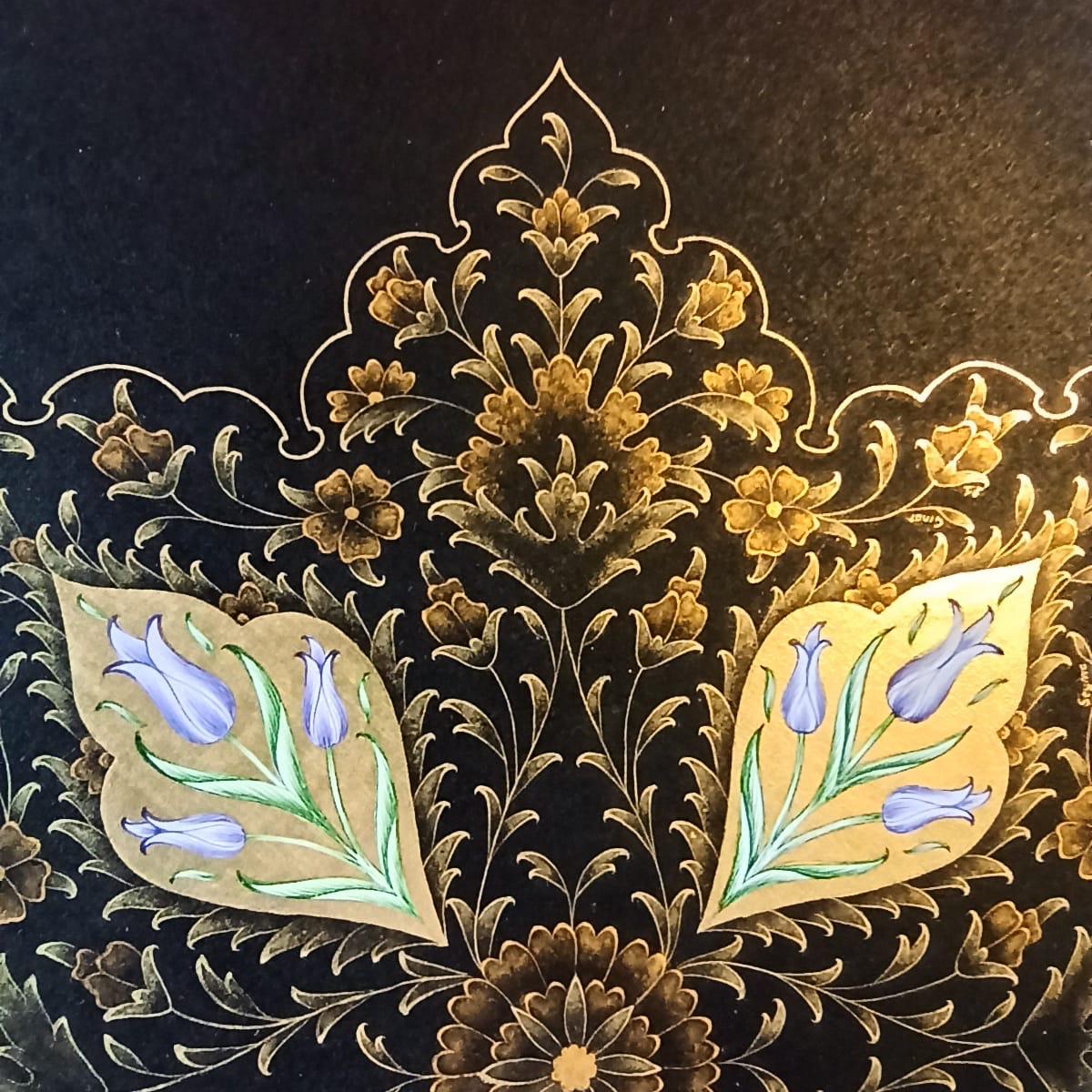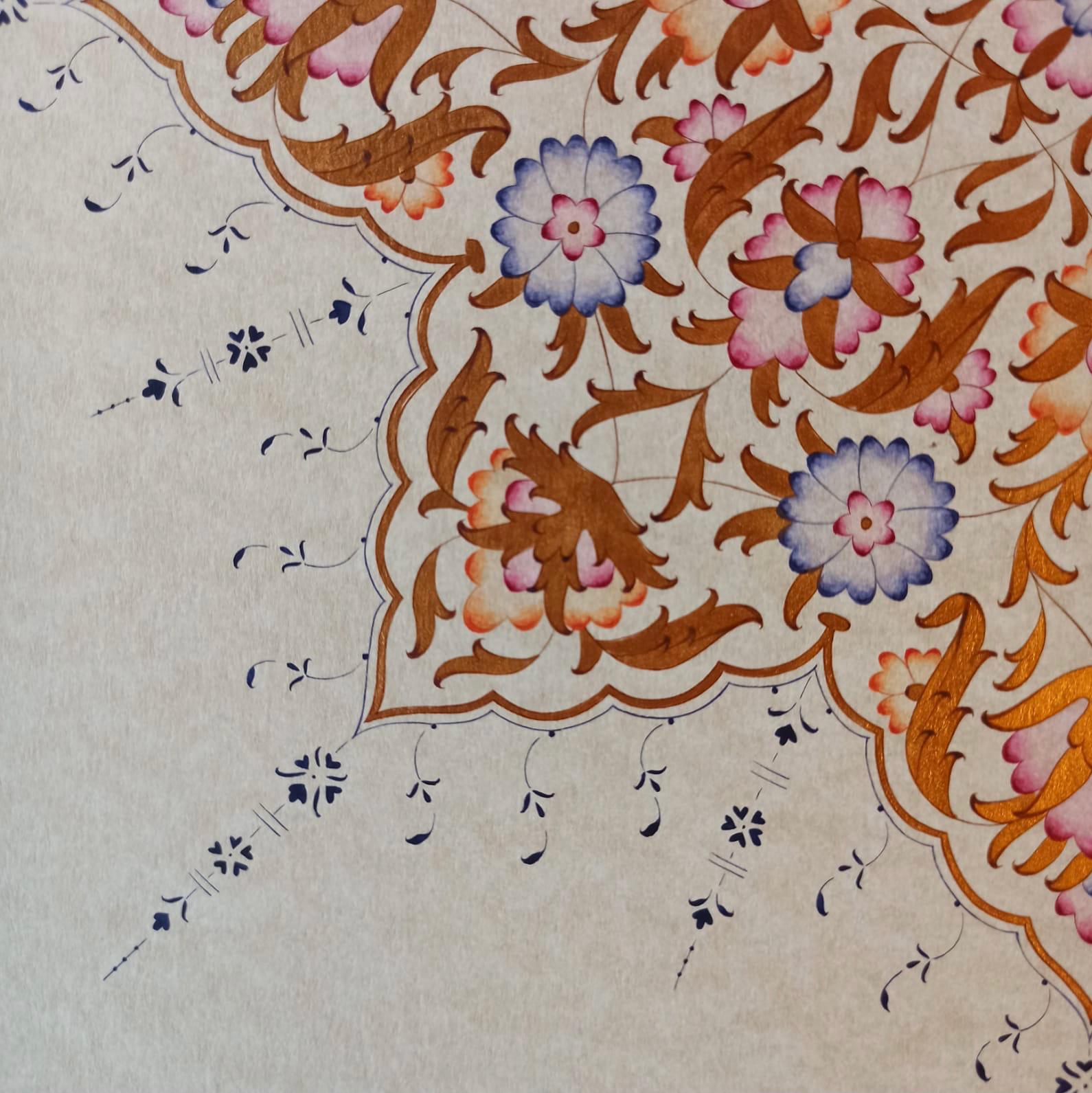Design
Almost every design has a center or several centers of gravity that will attract attention and where large diameter spirals, or stems, intersect. Stems follow natural flow, just like branches of plants in nature, and connect the other motifs, such as leaves and flowers.
Motifs, especially leaves, are very important in Tezhip design, adding movement, depth, and richness to the pattern.
Techniques
Types of Designs
Most common designs are free-drawn designs, symmetrical design, reverse symmetrical design, wheel of fortune design, and ulama patterns.
Symmetrical Design
Symmetrical designs are drawn in geometric shapes and have many varieties, depending on the area, the motifs they carry, and the number of symmetry axes, for example, square, rectangle, circle, ellipse, hexagon, and 6/8 star-shaped areas.
Sketch and Transfer
After determining the type of design, you can start with designing Tezhip art, following this 3-step method: Sketch the pattern plan, design the pattern, and transfer the pattern to the surface paper or passe-partout.
What`s Next
Once the design is completed, you can start paining it.
Gold is the main color used in Tezhip, symbolizing light and the reflection of the sun. Gold is also a pure element that does not dissolve or burn, representing luminescence and life. Another prominent color in Tezhip is blue, symbolizing the sky and Allah`s infinite mercy, and green, which stands for peace and tranquility. This makes turquoise the color of eternal peace, which is often used in Islamic arts.





